Embroidery Red Hanging Scroll for Longevity with Deign of “Ma Gu Giving her Birthday Greetings”
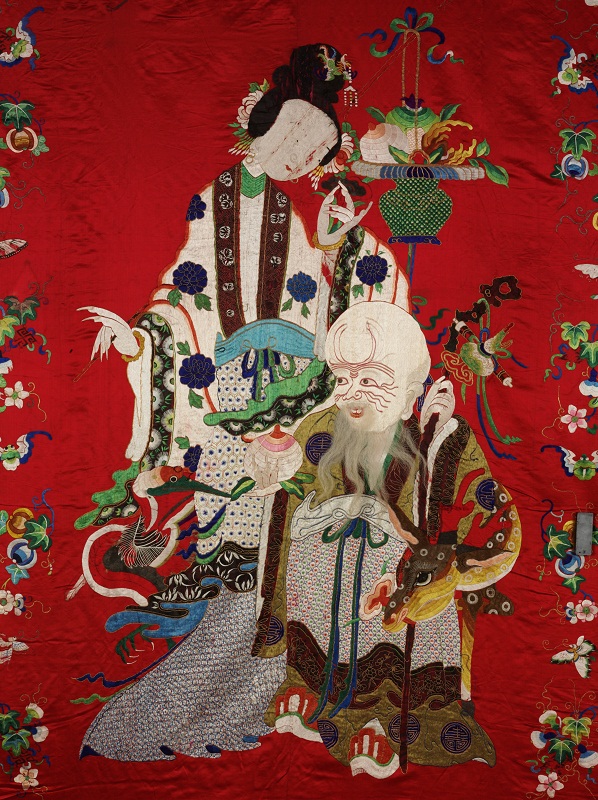
Qing Dynasty (1636—1912AD)
Width: 152cm; Height: 336cm
Hanging Scrolls such as this reflect over three thousand years of Asian tradition and heritage. Chinese people in the old times believed that these scrolls with auspicious images and meanings hung in the room can help bring good fortune, harmony, health, etc. for the family members. Embroidery Red Hanging Scroll for Longevity with Deign of “Ma Gu Giving her Birthday Greetings” is a gift to the person who has a birthday, with the wish of longevity to the birthday star.
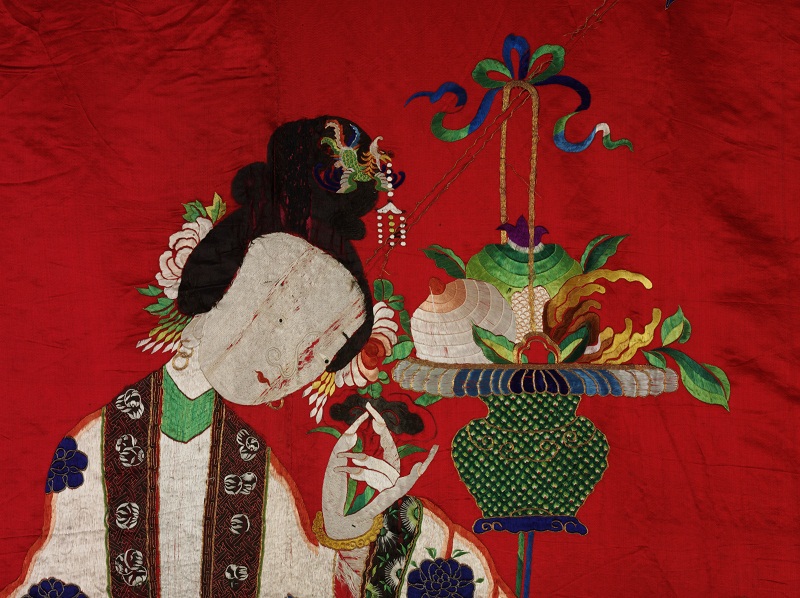
Ma Gu (literally, "Hemp Maid") embroidered on this hanging scroll is a legendary Taoist immortal associated with the elixir of life, and she is a symbolic protector of females in Chinese mythology. Stories in Chinese literature describe Ma Gu as a beautiful young woman with long birdlike fingernails, while early myths associate her with caves. “Ma Gu gives her birthday greetings" is a popular motif in Chinese art.
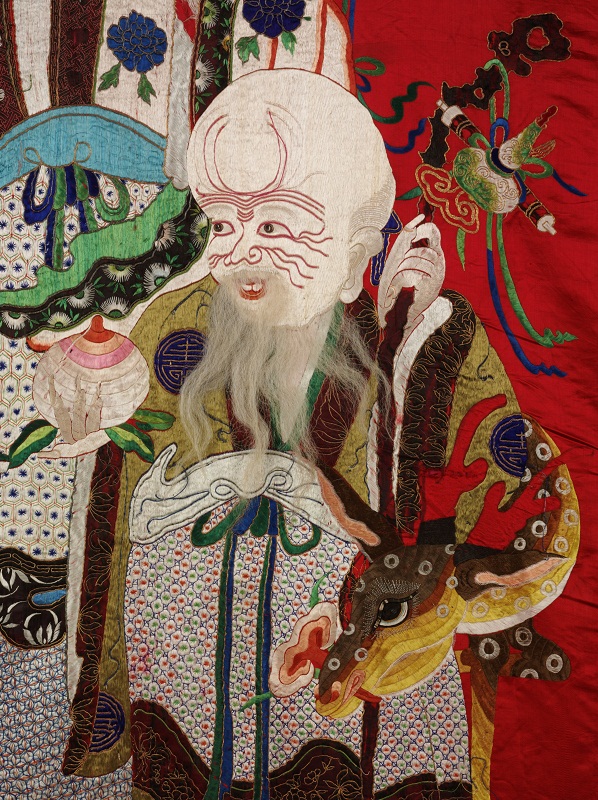
The plain stitch, together with net and nail stitches and many other embroidery skills, finds its application in this piece of artwork. With its elegant patterns, fine stitches and exquisite designs, this well-preserved treasure shows a vivid description of human figures, flowers, birds and plants and is of great artistic, historical and cultural values.
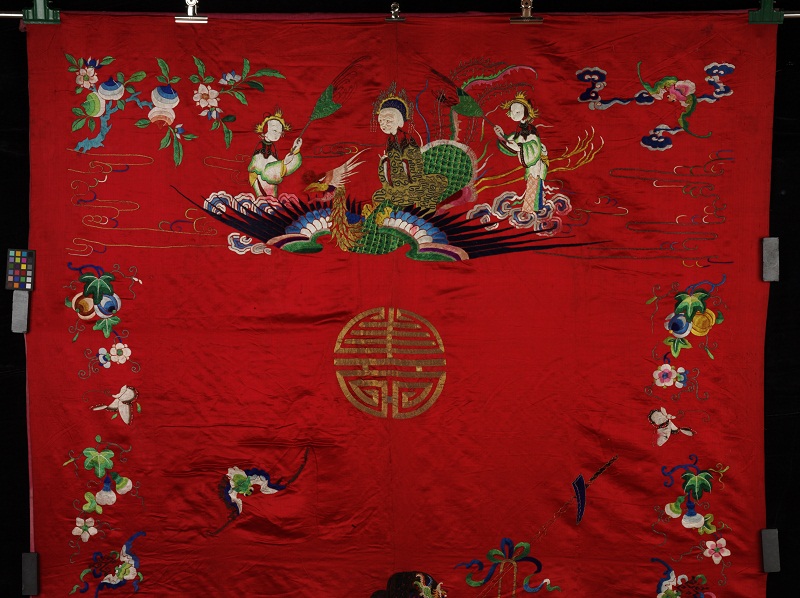
深入探索
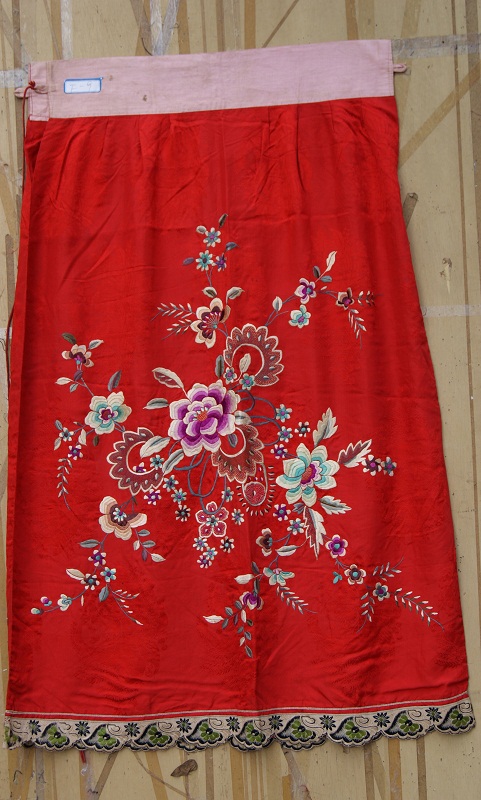
A Woman’s Red Woolen Skirt Embroidered with Flower Designs of the Miao Nationality in Western Hunan
From the collection of Hunan Provincial Museum

Tablecloth Embroidered with Design of “Kylin Looking Back”
From the collection of Hunan Provincial Museum

Embroidered Skirt with Flower and Bird Design from the Miao Ethnic Group
From the collection of Hunan Provincial Museum

Lotus Embroidered Shoes for Bound Feet
From the collection of Hunan Provincial Museum
Ethnographic and Folk Artifacts from Hunan Provincial Museum
The majority of Hunan Provincial Museum’s collection of ethnographic and folk artifacts dates from shortly before the modern era, reflecting both the minority people’s tradition and folk traditions of the Han Chinese people of Hunan region. The collection comprises almost 10,000 objects divided into seven types of material: textiles, paper objects, metal wares, ceramics, jade and stone wares, bamboo and wooden wares, and ivory carvings. These include garments, handicrafts, production tools, and items for daily use.
The largest and most significant parts of the collection are the recent pre-modern minority people’s garments and the Hunanese folk handicrafts. Among which, Hunanese embroidery is one of China’s four most famous styles, exemplified by these recent pre-modern folk textiles.



